-
Conference Room Level -1
- Registration and welcome coffee from 07.30
- Start of the Conference 08.30
- Exhibition open from 08.00 to 19.30
- Seated Lunch: 12.30
- End of Conference: 17.10
Tuto ETSI
Level 0 Tracks 1+2
Tuto BBF
Level 0
Tuto ONF
Level 0 Tracks 1+2
Tuto MEF
Level 0 Track 3
AI Net Tutorial
Auditorium Level -1
Plenary Session
MPLS + SDN + NFV world
AI net Conference
Conference Day 1
Level 0
Plenary Session
MPLS + SDN + NFV world Conference Day 1
Level 0 Track 3
AI net Conference
Auditorium Level -1
Conference Day 2
Level 0 Track 2
Conference Day 2
Level -1 Track 3
AI net Conference
Auditorium Level -1
Conference Day 2
Level 0 Track 2
Conference Day 2
Level -1 Track 3
AI net Conference
Auditorium Level -1
Conference Day 3
Level 0 Track 2
Conference Day 3
Level -1
 Morning Chairman
Morning ChairmanRami Yaron, Board Member, Chair, Global Marketing & Education Committee and Chair, 5G Focus Group, MEF
Rami has over 20 years of experience in the telecommunications industry as a technology leader. Currently Rami serves as an advisor for few telecommunication companies. He is also a member of the Board of Directors of MEF where he co-chairs the Global Marketing & Education Committee as well as the 5G Focus Group. Previously, Rami held various senior leadership positions in architecture, product strategy, and business development at NEC, Telco Systems, DragonWave, Axerra Networks, Carrier Access, and Paragon Networks. Rami holds an MS in Computer Science and an MS in Electrical Engineering from the University of New Haven.
Focusing on the latest status of SDN integration, backed by the results and observations from an independent and realistic testing point of view.

Carsten Rossenhoevel, Managing Director, EANTC
Carsten Rossenhövel is Managing Director and co-founder of EANTC AG (European Advanced Networking Test Center). Based in Berlin, Germany, EANTC is a test lab specializing in telecommunication technologies and offers vendor-neutral network testing services for manufacturers, service providers, and enterprise customers. In this role Carsten has over 20 years of experience in telecommunication networks testing and is responsible for EANTC's business development and marketing. His technical areas of expertise include Network Functions Virtualization (NFV) and transport network solutions (MPLS; SDN; Carrier Ethernet). Before joining EANTC, he studied Computer Science at the Technical University of Berlin and worked as a Software Engineer as well as Consultant in the financial services and media sector. In 1999 he founded EANTC together with Gabriele Schrenk and Herbert Almus.
Vendor’s solution, now on shared platform, can suffer from performance, stability and interoperability challenges. Discussing the challenges of running an extensive QA for network services, in order to optimize quality.
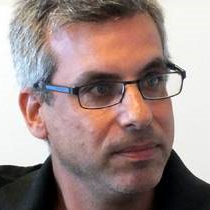
Nimrod Kravicas, Business Development Director, Keysight Technologies
Nimrod Kravicas, Business Development Director at Keysight Technologies. 20 years in the Networking and Security business. An expert on Q.A: validation via automation, test plan design and process management. Today focusing on QA process adjustments for Carrier NFV cloud needs, from vendor selection to element deployment. Homologating vendor QA methodologies to match the carrier needs.
Presenting the drivers and triggers for the need of full end-to-end automation of network and service management, the rational for the formation of the new ISG and its goals, as well as the work program and status.

Nurit Sprecher, Vice-Chair of the ETSI ZSM ISG WG
Describing examples of intent-based policies and illustrating how these policies can be automated using an intelligent automation software which comprises of an orchestrator, an inventory system, analytics and machine learning algorithms, and, path computation and policy engines.
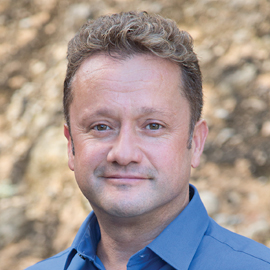
Cengiz Alaettinoglu, CTO, Blue Planet
Cengiz Alaettinoglu is the Chief Technology Officer of Blue Planet, a division of Ciena. In this role, he leads Blue Planet’s multi-layer network automation efforts and is responsible for the technical direction and architecture of the Blue Planet portfolio. Before joining Ciena through the Packet Design acquisition, Cengiz was focused on real-time SDN analytics and orchestration applications that intelligently satisfied path and bandwidth demands and adapted their paths to changing network conditions using real-time analytics. His early experimental work, correlating network performance issues to routing protocol incidents, pioneered the creation of route analytics technology. Prior to Packet Design, Cengiz worked for USC's Information Sciences Institute where he worked on the Routing Arbiter project. He was co-chair of the IETF's Routing Policy System Working Group, has been published widely, and is a popular lecturer at industry events worldwide. Cengiz holds a BS in Computer Engineering from Middle East Technical University, Ankara, and a MS and PhD in Computer Science from the University of Maryland.
Describing how gRPC can support multiple device programmability paradigms and ultimately facilitate network automation. This open-source technology can be used for model-driven device manageability, efficient device monitoring and the implementation more advanced software-defined network architectures.

Santiago Alvarez, Distinguished Engineer, Cisco
Santiago is a distinguished engineer at Cisco Systems focused on network routing and programmability. He is responsible for influencing technology innovation and driving its adoption worldwide. Santiago is a regular speaker at various networking conferences throughout the world and at Cisco Live. He is the author of the Cisco Press “QoS for IP/MPLS Networks”. Santiago holds a BS in Computer Science, a MS in Computer Science and a MS in Telecommunications.
With SDN, NFV, SD-WAN and now 5G migrations, network service providers face the risks inherent to all new network technology adoption. Reviewing an approach to minimize these risks with blueprint-driven, self-service environments and standard orchestration to allow for fast certification and release of the next generation network solutions.
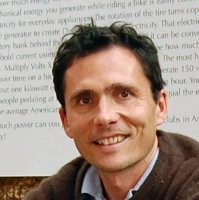
Pascal Joly, Director of Business Development, Quali
Pascal is Director of Business Development at Quali. He has over 20 years of experience in large and small companies building and architecting software solutions for complex network and cloud infrastructure deployments.
A cognitive network is a multi-layer, self-aware, self-organizing and self-healing infrastructure that can take predictive and/or prescriptive action based on real-time knowledge gleaned from collected data and experience. Looking how Machine Learning can enable to build the future cognitive network now.
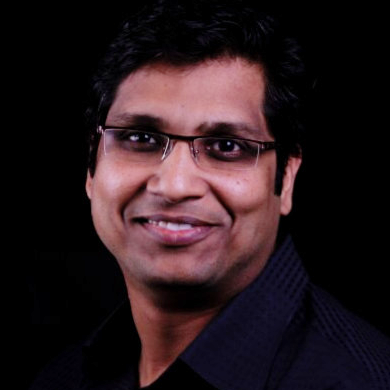
Vikash Rungta, Product Manager, Infinera
Understanding the key elements of a model-driven management framework Understanding how YANG models enable structured data models for configuration and state via programable interfaces Reviewing the choices of transport mechanism, APIs and content encodings for getting state and statistics from the network via push based streaming telemetry

James Cumming, Product Line Manager, Nokia
Exploring how to programmatically avoid common (and not so common) misconfigurations by encoding best practices into network-wide models that constrain what knobs can be turned and how. Looking specifically at a contemporary use case: how to migrate an LDP-based network to Segment Routing using intelligent YANG service models.

Shelly Cadora, Principal Engineer, Cisco
Hundreds of YANG data models have been written over the last couple of years and published through various standards bodies and open source organizations. Explaining how these models can be combined with network resource models, network element models, and the protocol and device models to make a fully integrated YANG-based system that can be used to automatically deploy a variety of services on top of a multi-layer, multi-technology network.
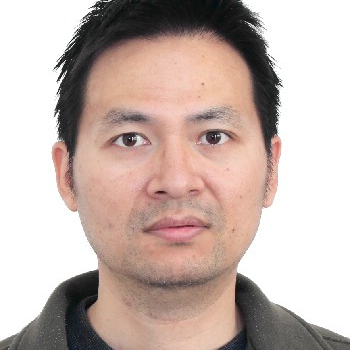
Qin Wu, Technology Architect,, Huawei
Qin Wu, Huawei, is Technology Architect, active contributor in IETF, working on network automation and YANG, Network Telemetry, engaging with some related open Source Projects, co-chairs of L2SM Working Group, previously co-chaired L3SM Working Group and IETF RTG YANG Architecture Design Team member, help drive WG to deliver L3SM service model as RFC8049 and L2SM service model as Working Group document and rewrite L3SM service model work based on deployment experience and republished as RFC8299. Note that L2SM working group and L3SM working group are tasked to define YANG data models that can be used for communication between customers and network operators and to deliver a Layer 3 provider-provisioned VPN service and a L2VPN service.
-
Conference Room Level -1
- Exhibition open from 08.00 to 19.30
- End of Conference: 17.10
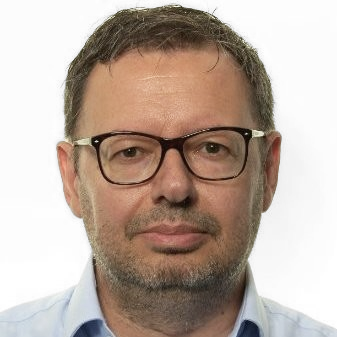 Afternoon Chairman
Afternoon ChairmanRoland Thienpont, Director IP Product Marketing EMEA, Nokia
Roland has over 25 years of experience within the networking and data communications industry, in the areas of engineering, technology and product strategy and product management. From early 2000 until 2016 he had the role of IP product manager for Nokia's IP/MPLS Service Router and Ethernet Services Switch products for Europe, Middle East and Africa. Recently he took the role of Director Product Marketing for IP. Roland holds a MSc. in Electronic Engineering with a specialization in Telecommunications from the University of Antwerp and an Alcatel International Master in Management.
Understanding your toolbox of path programming technologies
Learning from the success of path programming deployments
Learning about most appropriate use-case scenario per path programming technology option
Avoiding SDN failure by using wrong path programming tool for a use-case
Avoiding known mistakes when architecting SDN based path programming

Matthew Bocci, Director, Product Line Manager Nokia
Matthew Bocci is Director of Technology and Standards with the Service Router product management team at Nokia, specialising in MPLS/Segment Routing, pseudowire and OpenFlow technologies. He is co-chair of the IETF Network Virtualisation Overlays (NVO3) And BGP Enabled Services (BESS) working groups, and has been a regular contributor to the IETF for many years. He is a co-author of a number of publications and IETF drafts and RFCs on MPLS-based converged networks, as well as a regular speaker at industry conferences. Previously, Matthew provided advanced technical consulting in traffic management, signaling and network performance with Newbridge Networks. He holds a PhD in ATM network modeling from Queen Mary & Westfield College, London.
Outlining the transformation of NMS into semi-automated control systems. Puting progress with SDN and AI into the context of multi-vendor networking. Explaining the crucial role of open interfaces as well as the need to balance continuity with the desire for automated, semi-autonomous control.
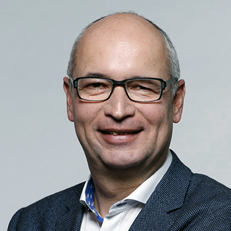
Ulrich Kohn, Director Technical Marketing, ADVA Optical Networking
Ulrich is Director of technical marketing at ADVA Optical Networking with responsibility for the companie`s One Network Edge program. With over 25 years of experience in fixed and mobile networks, Ulrich is familiar with the challenges and pain points of today’s networks and is able to show how the latest technology provides answers and an economic, future-proof path forward. Before joining ADVA Optical Networking in April 2013, he worked for Ericsson and Marconi Communications in management positions with Business Development, Network Strategy, Product Marketing and Technical Sales.
Delivering examples of deployments, ranging from telcos to ISPs to Media and Content networks. Discussing integration between SDN Controllers and network/node health monitoring systems, in order to provide fully automated network remediation when fault conditions are detected.

Julian Lucek, Distinguished Systems Engineer, Juniper Networks
Julian Lucek is a Distinguished Systems Engineer at Juniper Networks, where he has been working with many operators on the design and evolution of their networks. Before joining Juniper Networks in 1999, he worked at BT for several years, at first in the Photonics Research Department and later in the data transport and routing area. During this time he gained a PhD in ultrahigh-speed optical transmission and processing from Cambridge University. He is the holder of several patents in the area of communications technology. He has a Master's degree in Physics from Cambridge University and holds Juniper Networks Certified Internet Expert (JNCIE) certification number 21. He is co-author of the book "MPLS-Enabled Applications: Emerging Developments and New Technologies", by Ina Minei and Julian Lucek. This book is now in its third edition.
Highlighting existing challenges and solutions for bringing automation in the context of peer engineering. Field-based use cases are described related to service providers, webscale and enterprises covering both ingress and egress peer engineering. Discussing as well the role of big data analytics and SDN control in addressing these problems.
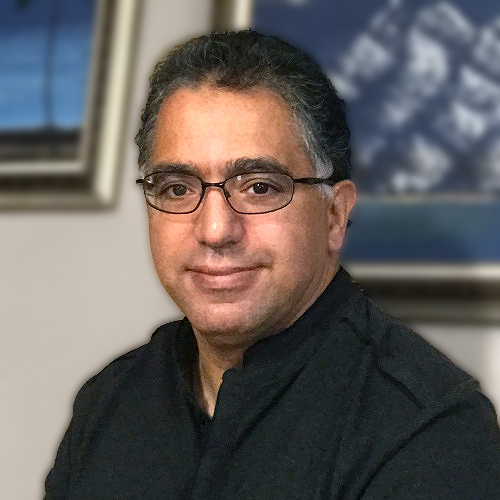
Hamid Ould-Brahim, Director Product Management, Nokia
Hamid Ould-Brahim is Director Product Manager and Distinguished Member of Technical Staff at Nokia IP/Optical Network division. With over 25 years of industry experience in telecommunications, Hamid architected a number of Internet related VPN technologies and edited and co-authored a number of IETF RFC standards and drafts and co-chaired IETF routing area l1vpn WG. Hamid holds over 100 patents worldwide that cover a wide spectrum of IP related technologies. Hamid is currently working on bringing software control to IP network and particularly in the context of peering. Previously Hamid was a technical advisor and a Distinguished Member of Technical Staff at Nortel.
Explaining how SRv6 is introduced in the Cloud Metro solutions to act the base to converge the data center network and the metro network to set up the unified fabric, facility network service provisioning, and how SR-TE and SR-based SFC solutions provides the value-added services.
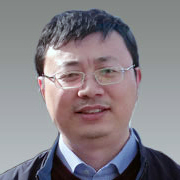
Li Zhenbin, Chief IP Standard Representative, Huawei Technologies
Zhenbin Li is in charge of the research and standard promotion work of IP protocols. Before that he had been the Chief IP/MPLS Service Architect and the Chief Architect of SDN controller to be responsible for the service and architecture design of IP software platform and SDN controller. Zhenbin Li and his team are taking an active part in the IP/MPLS/SDN standardization work in IETF and promote the innovation of SR, BGP/VPN, PCE, SBI/NBI, Telemetry, etc.
The fast emerging trend of blockchain is now being applied to infrastructure in order to allow operators to streamline operations and compliance processes using distributed ledger technology.

Guillaume de Saint Marc, Sr Director, CTO & Architecture Office, Cisco
Guillaume is in charge of a global technology innovation team – primarily located in Europe - reporting to Cisco CTO of Engineering and Chief Architect. He is based in Paris where he leads Cisco’s PIRL: Paris Innovation & Research lab. Guillaume and his team are active on various software and infrastructure technology fronts such as Information Centric Networking, Cloud Native Networking and Orchestration, Big Data, Artificial Intelligence, Video Analytics, 5G and Digital Transformation for Industries, Smart-Cities or Media Production. The team collaborates closely with a number of universities and research communities, as well as startup ecosystem and major industry partners to drive open and co-innovation initiatives. Guillaume started his career at Canal+ in 1996 where he designed several generations of digital TV platforms and services, and then moved to NDS ltd in 2003 where he led the New Initiatives division until the acquisition by Cisco in 2012. Guillaume graduated from Ecole Centrale Lille, France.
The 3GPP requirements and service definitions for 5G mobile services, including Ultra-Reliable Low Latency Communications (URLLC), have led to the definition of application use cases that would make use of such 5G services, such as electrical utility smart grid enhancements, factory automation, autonomous driving, and remote surgery. Describing recent advancements to make these services a reality.

Andrew G. Malis, Distinguished Engineer, Huawei Technologies
Andrew G. Malis is a Distinguished Engineer at Huawei Technologies. He specializes in product and network architecture and future evolution; standards leadership (internal and external to the company); customer consultation; and SDN, NFV, IP, MPLS, Ethernet, and other telecom and data networking protocols. Previously, he has held senior engineering positions at Verizon, Tellabs, Cascade Communications, BBN, and other industry-leading organizations. He also holds standards leadership positions as a Working Group co-chair and a member of the Routing Directorate in the Internet Engineering Task Force (IETF). He has held leadership roles in other standards organizations, including as Services Area Director and Technical Council Member at the Open Networking Foundation (ONF), board memberships, and president/chairman. He has written and contributed to many technology standards, including having authored over 40 IETF RFCs, and has spoken and chaired at numerous industry conferences, and is an ongoing member of the technical program committee for several conferences.

Ethan Grossman, Senior Embedded Software Manager, Dolby Laboratories
Ethan Grossman is a Senior Embedded Software Manager in the Cinema business group at Dolby Laboratories. He has designed software, hardware, architecture and provided technical leadership in the field of professional audio and video for Dolby, Avid, Sony, and others for 30 years. Ethan is Secretary to the IETF DetNet Working Group, and is editor and co-author of the DetNet Use Cases draft and the DetNet Security Considerations draft.
